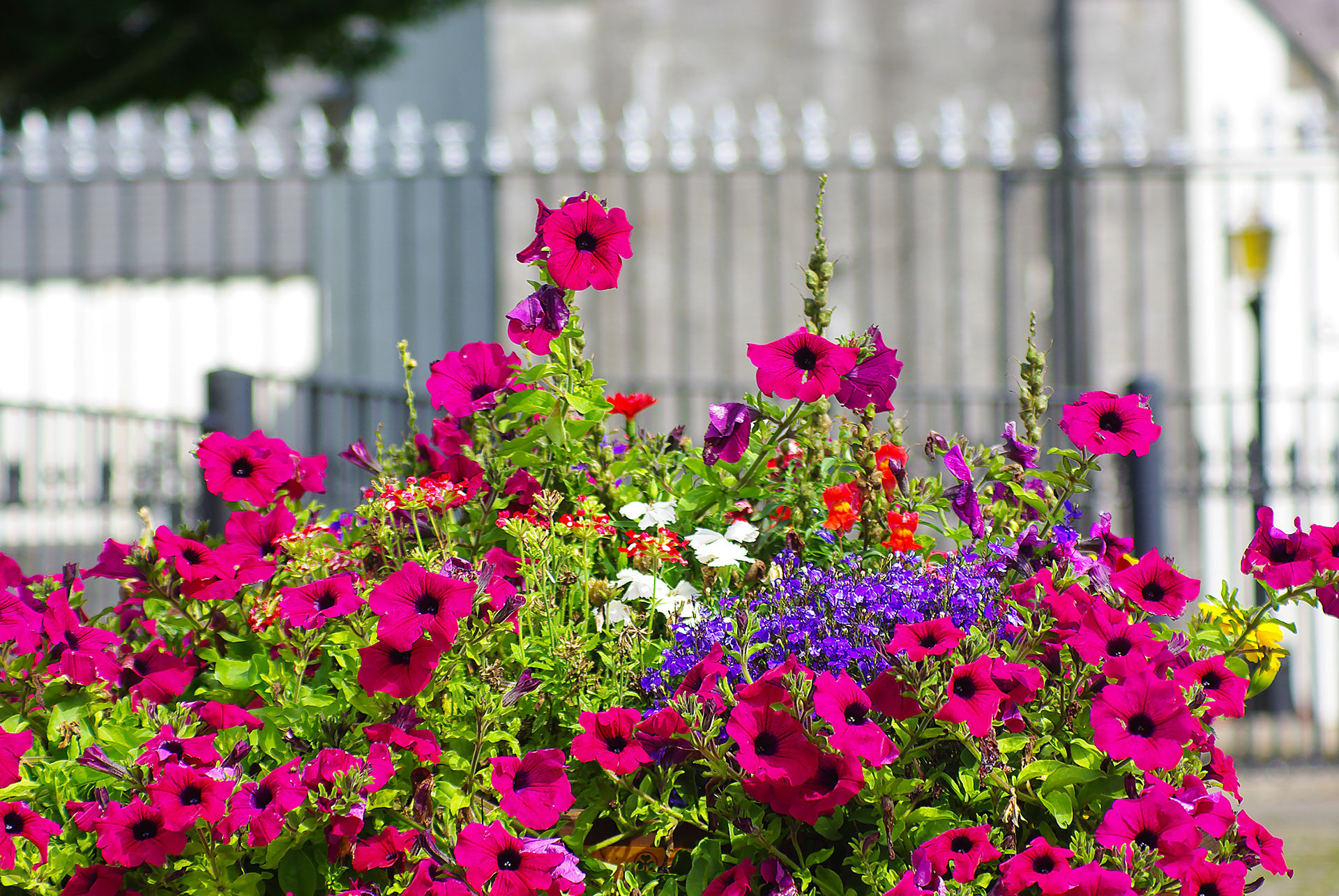Ballinakill, Co. Laois.
The name Ballinakill is derived from the Gaelic, Baile-na-coille, which means “the town of the wood.” Like other nearby villages, such as Durrow, Ballinakill was once surrounded by extensive woodlands, and the name derives from this fact. Ballinakill is situated in the ancient parochial district of Disert-Gallen.
A permit was granted to Sir Thomas Coatch, proprietor of the Manor of Gallen, in 1606, which gave him the right to establish a market and fair here. Five years later, in 1611, Sir Thomas Ridgeway, Earl of Londonderry, established an English colony, and the following year, James 1, officially incorporated the town by charter. T
By this charter James gave to the sovereign, free burgesses and commonalty the power of returning two Members of Parliament (which Ballinakill did until the Act of Union in 1800), nominated the first sovereign and burgesses, prescribed the mode of electing officers, granted a Court of Record, to be held before the sovereign on every Thursday, for all personal actions not exceeding five marks, and one fair to be held on each Thursday in the week of Pentecost, and to continue for the morrow of the same, and another fair on every 5th of November, and the day after, with a Court of Pie Poudre, and all liberties, emoluments &c. to such courts, markets and fairs, pertaining: and constituted the sovereign clerk of the market.
Ballinakill is a planned estate town laid out by Michael Trench who was an amateur architect. In 1831 the population was 4,014 and of these 2,087 lived in rural districts. In 1834 a breakdown of the religious denominations reveals 4,200 Roman Catholics, 228 Protestant churchmen and three Dissenters. At this time there were churches in Ballinakill and Knock, with attendances respectively of 3,000 and 717. The present population of the town is around 400 people. The town is centred on The Square, which boasts a fine Market House and 1798 monument. It is unique in ecclesiastical history in the fact that the two churches stand side by side in Church Street.
Approaching the village from the north, one passes through the impressive entrance of two imposing lime trees, which have stood for generations, and at this point there once stood a toll gate. And yes you’ve guessed it, we have named our Festival in honour of the ‘Twin Trees’ of yore.
The original maps of the town in the 1840’s show a fine well laid out town connecting the town to the local landlords –Trench, Domvile and Poe – and a streetscape, which has since changed to include the Durrow road and the Castlecomer road at the bottom of Stanhope Street.
Ballinakill was a very important industrial town and evidence today exists in the names of the streets like Brewery lane. Brewery Lane is between Duggan’s shop and the old National school, which is used as a playschool today. A small water-powered brewery operated in the village of Ballinakill during the late 1700s and early 1800s (030-015). Production ceased in 1832 and the malt mill was reutilized as a corn mill until the 1850s. No traces of this site survive. The brewery was owned by the Comerford family who also owned the Hotel that was on The Square beside Castle Lane.
Source – South Laois Tourism
